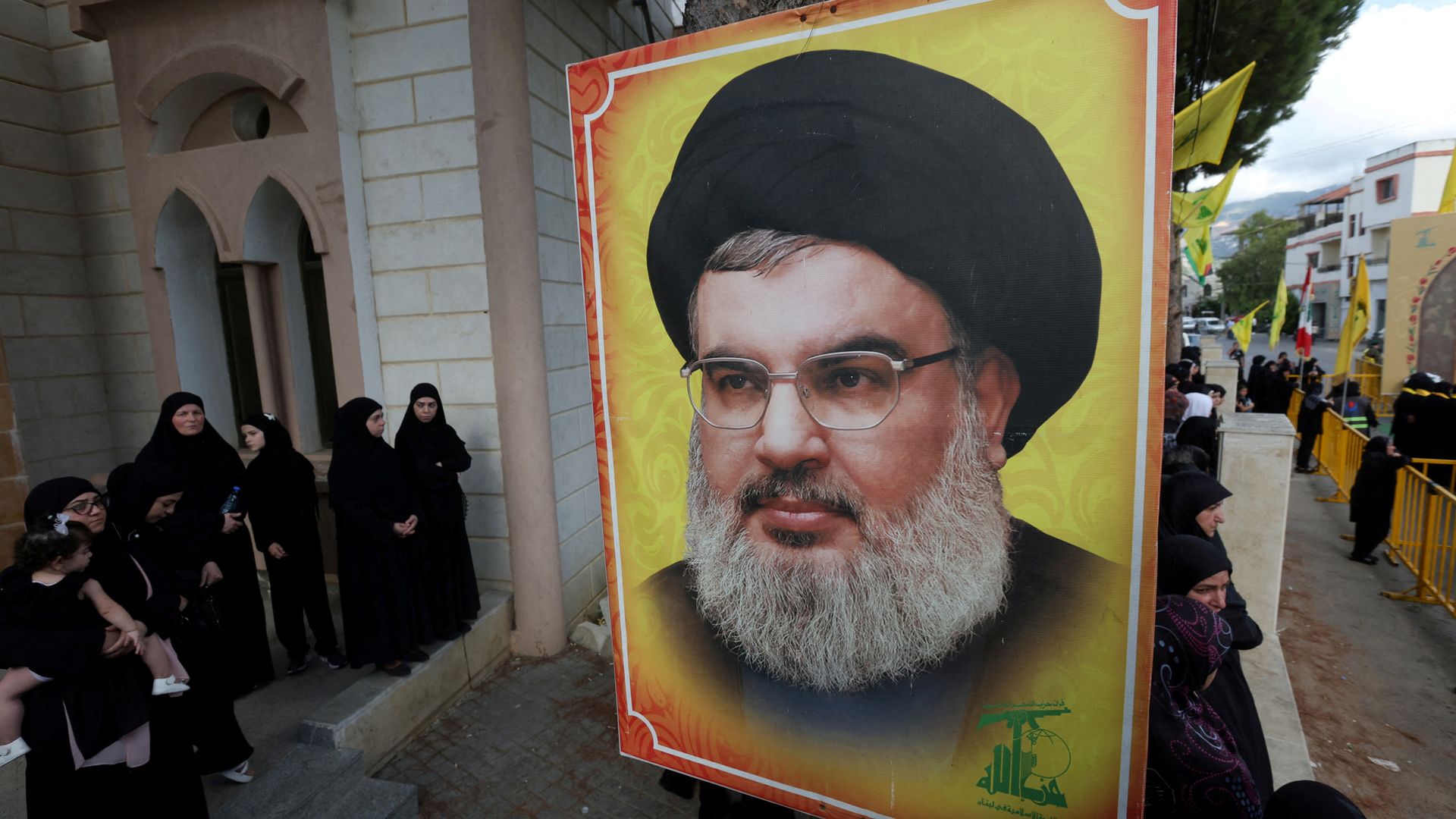Hassan Nasrallah was the target of recent Israeli attacks on the Lebanese capital, but it is not clear whether the leader of the Iran-backed militant group survived.
A passionate and fiery orator, Nasrallah is the leader of the Shia political and military faction Hezbollah.
The secretary general of Hezbollah is considered by many to be the single most powerful individual in Lebanon with as many as 100,000 fighters at his disposal and members of his group being MPs as well.
Nasrallah was born in Beirut in 1960, where he was described as a devout and motivated student of Islam.
He joined Hezbollah in 1982, the year it was formed and rose through its ranks.
The 64-year-old has led Hezbollah into wars against Israel and taken part in the conflict in neighbouring Syria.
Confusion around Hassan Nasrallah’s condition – and it could force Iran into a decision
Israel unleashes huge strikes on Beirut – it says Hezbollah leader is the target
‘Escalation serves no one’: Sir Keir Starmer calls on Israel and Hezbollah to agree ceasefire in address to UN
Under his leadership, the group has been transformed into a regional military and political power.
Nasrallah cemented Hezbollah as an arch-enemy of Israel, seeking deeper alliances with Shia religious leaders in Iran and Palestinian militant groups like Hamas.
Nasrallah holds the title of Sayyed, an honorific meant to signify the Shia cleric’s lineage dating back to the Prophet Muhammad.
Nasrallah has countless followers across the Arab and Islamic world, but he is viewed as an extremist in much of the West.
Despite the power he wields, Nasrallah lives in hiding for fear of an Israeli assassination attempt.
After the most recent attack, many of his followers will fear that that worry has become a reality.
Despite rapid statements that Nasrallah was “safe” there has not been an update since, and there is confusion over the fate of the Hezbollah leader.
The blast site is so large, it will take time for rescue workers to find the dead. The number of civilians killed is likely to rise considerably.
👉 Click to subscribe to the Sky News Daily wherever you get your podcasts 👈
How did he rise to power?
Born to a poor Shia family in Beirut’s impoverished suburb of Sharshabouk, Nasrallah was later displaced to south Lebanon.
After studying theology, he joined the Amal movement, a political and paramilitary organisation, before joining Hezbollah in the year it was created.
Hezbollah was formed by Iranian Revolutionary Guard members who travelled to Lebanon in the summer of 1982 to fight invading Israeli forces.
It was the first group that Iran backed and used as a vehicle to export its brand of politics.
Nasrallah built a base of power as Hezbollah grew to be a part of the Axis of Resistance.
Two days after its then leader, 39-year-old Sayyed Abbas Musawi, was killed in an Israeli helicopter gunship raid in south Lebanon, Hezbollah chose Nasrallah as its new secretary general in February 1992.
Under Nasrallah’s leadership, Hezbollah is credited with leading the war of attrition that led to the withdrawal of Israeli troops from south Lebanon in 2000.
Keep up with all the latest news from the UK and around the world by following Sky News
After this victory, his status rose and was further cemented in 2006 when Hezbollah fought Israel to a stalemate during the 34-day war.
However, his popularity took a hit when Syria’s civil war erupted in 2011 and Hezbollah fighters rushed in and sided with Assad’s forces – even as he was ostracised by the Arab world.
Be the first to get Breaking News
Install the Sky News app for free
Role in the Israel-Hamas war
A day after the 7 October attacks in Israel, Hezbollah began attacking Israeli military posts along the border and calling it a “backup front” for Gaza.
Tit-for-tat strikes have been traded almost daily since, and over the past weeks, as tensions have risen further, Nasrallah has tried to strike a defiant tone even as Israel strikes again and again at his organisation.
After Israel announced a new phase in the conflict looking toward its northern border, a series of pager and radio explosions rocked Lebanon, seemingly aimed at Hezbollah members.
They kickstarted the most recent waves of attacks on Lebanon.







